Peter Leslie was the first to record a His Bundle electrogram on 23/11/1972.
Two years later, on 6/11/1974, I undertook the first programmed electrical stimulation study, using a stimulator constructed by Don McCallum. The stimulator produced pacing trains only.
My interest in electrophysiology dated from a lecture by Dr Dirk Durrer from Amsterdam on the topic of re-entry, given at the National Heart Hospital in London in 1968. During a period of study-leave in 1975, I spent some time in Amsterdam observing electrophysiology studies, and returned to Wellington keen to put what I had learned into practice.
Don McCallum built a new stimulator for me, which delivered programmed single extrasystoles.
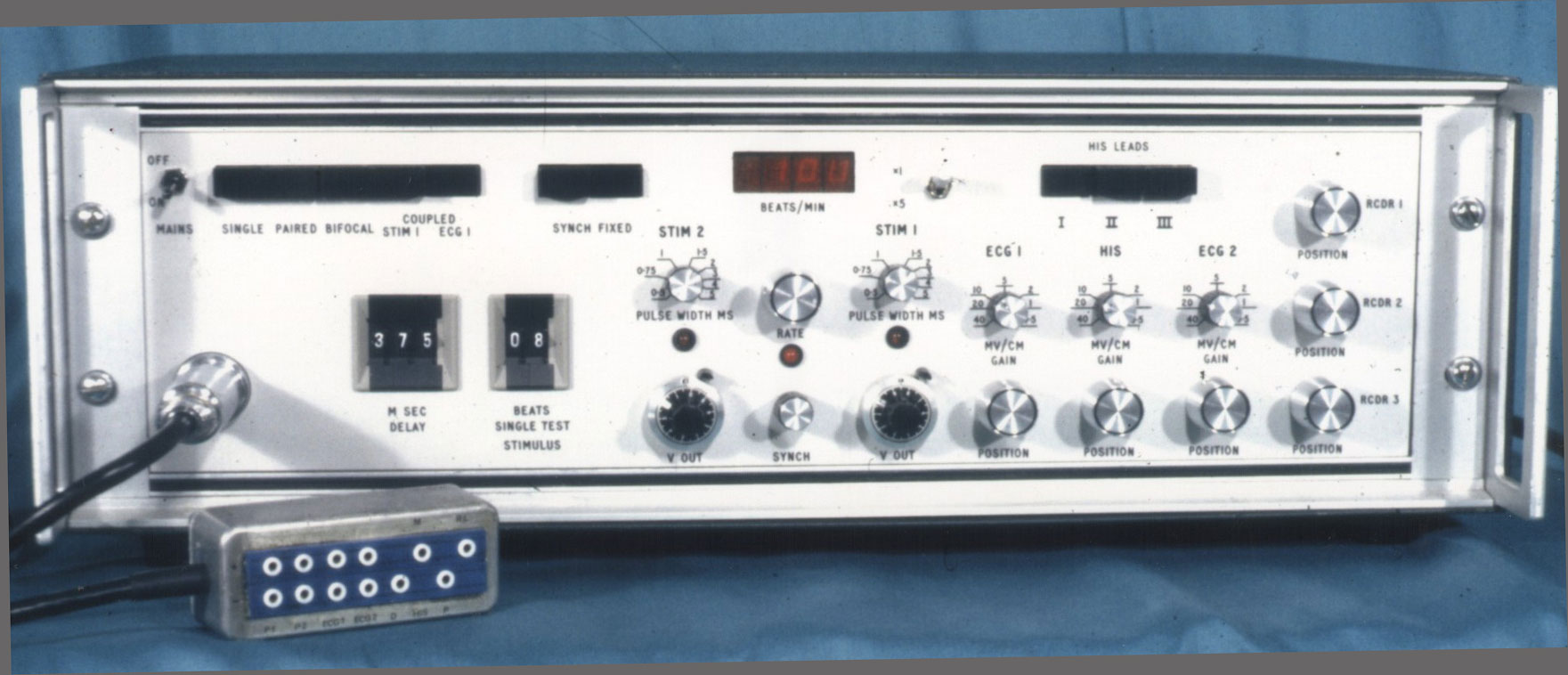
Below shows Ron performing the first EP study using the new stimulator. The date was 16/2/1977 and the technician assisting is Carol Allan (nee McIntyre).
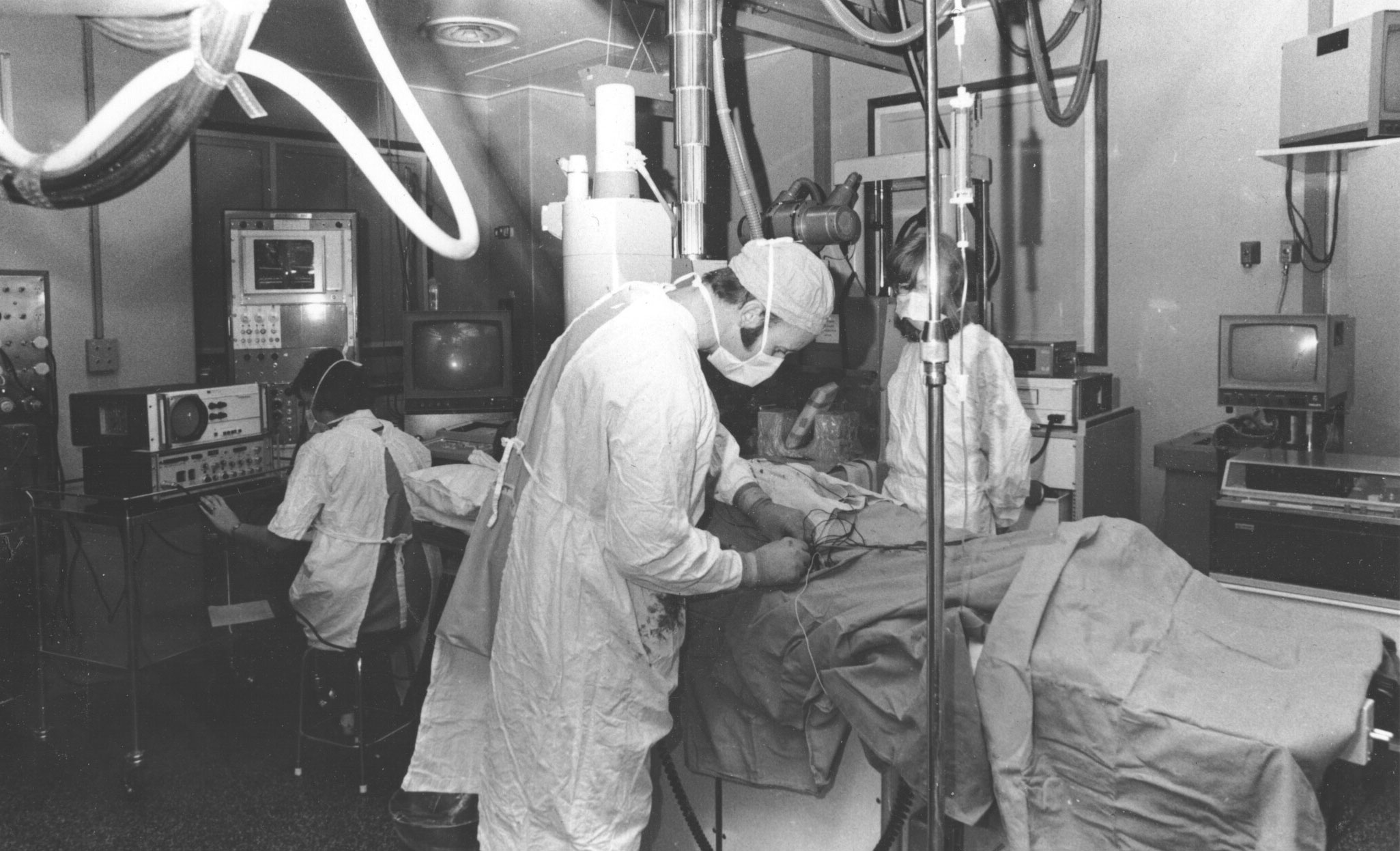
I subsequently realised that we needed a more sophisticated programmable stimulator, and Don McCallum delegated its construction to Russell Kean, another biomedical technician. Unfortunately, there were considerable delays in completing the build and the new equipment wasn't ready until 1980. Now, up to three programmed extras were possible.
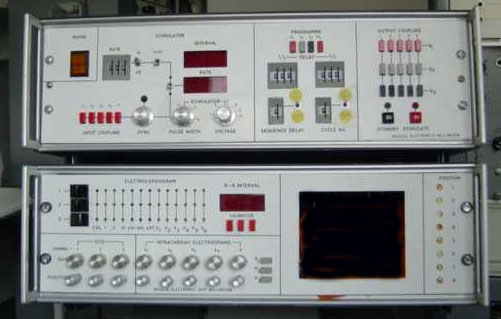
A total of 160 studies were performed in all, with frequent interruptions due to equipment failure, until eventually repairs were no longer possible. The last study performed was on 29/11/1993.
A majority of the studies undertaken were for PSVT and WPW syndrome.
Ablation therapy for selected cardiac arrhythmias is a relatively new concept. I can recall sending a patient to Sydney in the early 1980s for surgical ablation treatment for WPW syndrome and paroxysmal AF with heart rates in excess of 200/min. Such therapy subsequently became available at Green Lane Hospital and there the last patient to receive surgical ablation was operated on in 1990. By then, percutaneous radiofrequency ablation techniques had been proven internationally making the surgical approach obsolete.
Warren Smith at Green Lane and Ian Crozier at Christchurch hospitals were the first to offer percutaneous ablation therapy. A number of patients were referred from Wellington, mainly to Green Lane Hospital, and the most common reason initially was symptomatic WPW syndrome.
Electrophysiology studies resumed in Wellington Hospital in 2001 with the return of Nigel Lever back from Oxford where he had gained considerable experience in the field. Initially Nigel used an old stimulator borrowed from Ian Crozier in Christchurch, and it wasn't until 2003 that Wellington Hospital acquired a modern EP Lab.
Nigel undertook the first ablation procedures in Wellington on 9/9/2003. He carried out 202 EP procedures to 28/3/2006, including a significant number of radiofrequency ablations. The majority of these patients had pre-excitation, AVRT or AVNRT, but there were also a few with AF and some with VT (unmapped). When Nigel resigned in 2006 to take up a position in Auckland, the local EP service lapsed.
In 2012, Alejandro Jimenez was appointed as the new Cardiac Electrophysiologist and a full diagnostic and interventional service resumed.
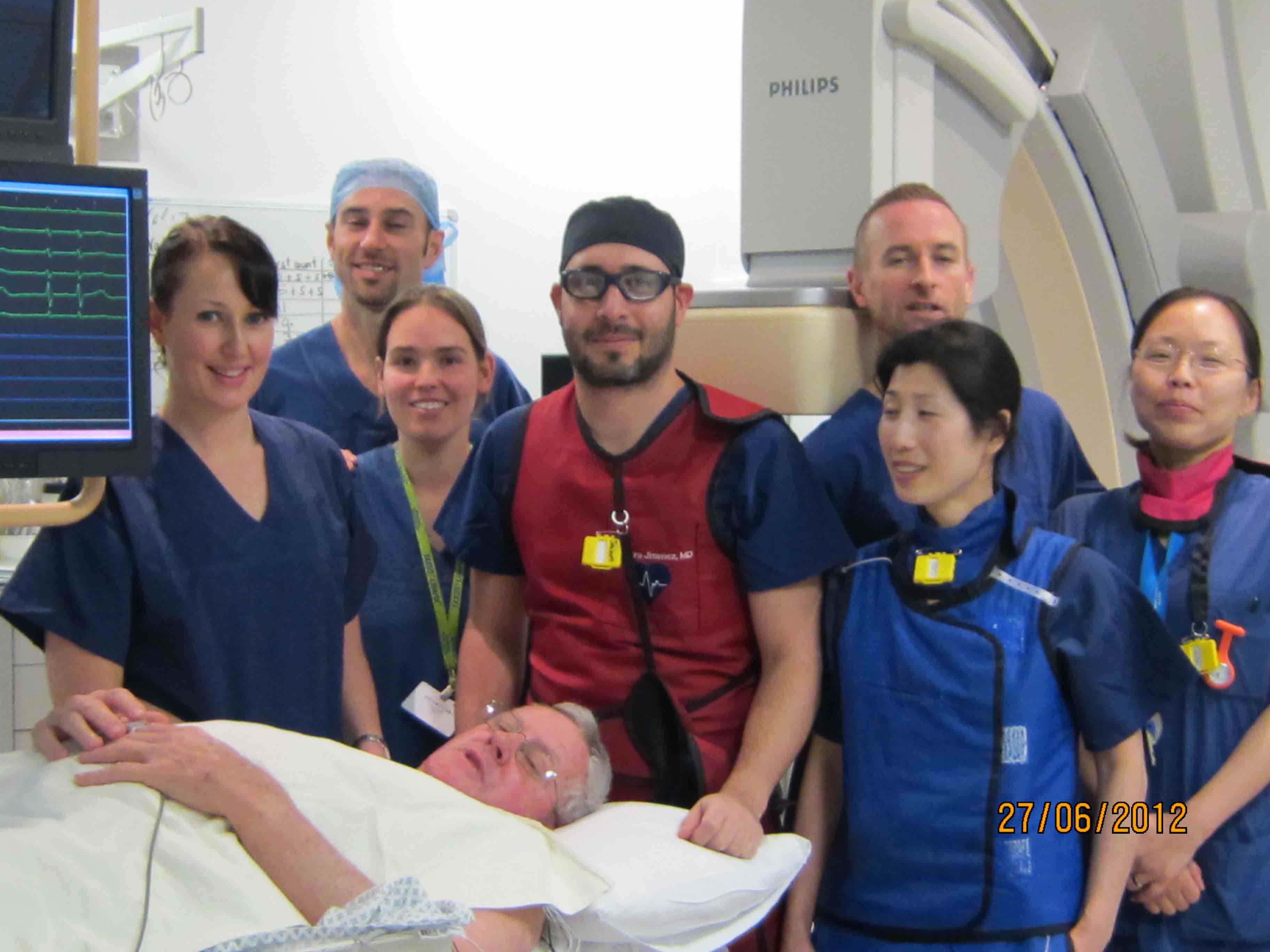
Team assembled for first procedure on 27 June, 2012
L->R:Anna Curac, Dean (Radiographer), Amanda Scully, Alejandro Jimenez, Jennifer (Nurse), Tony (Industry Tech), Lin (Nurse)
At the time of writing, an average of three procedures are performed weekly. These are undertaken in a dedicated Pacing / EP Lab. The majority of patients investigated and undergoing radiofrequency ablation have AV re-entrant conditions. Alejandro is awaiting the arrival of 3-D mapping equipment which will allow him to undertake AF and VT interventions.
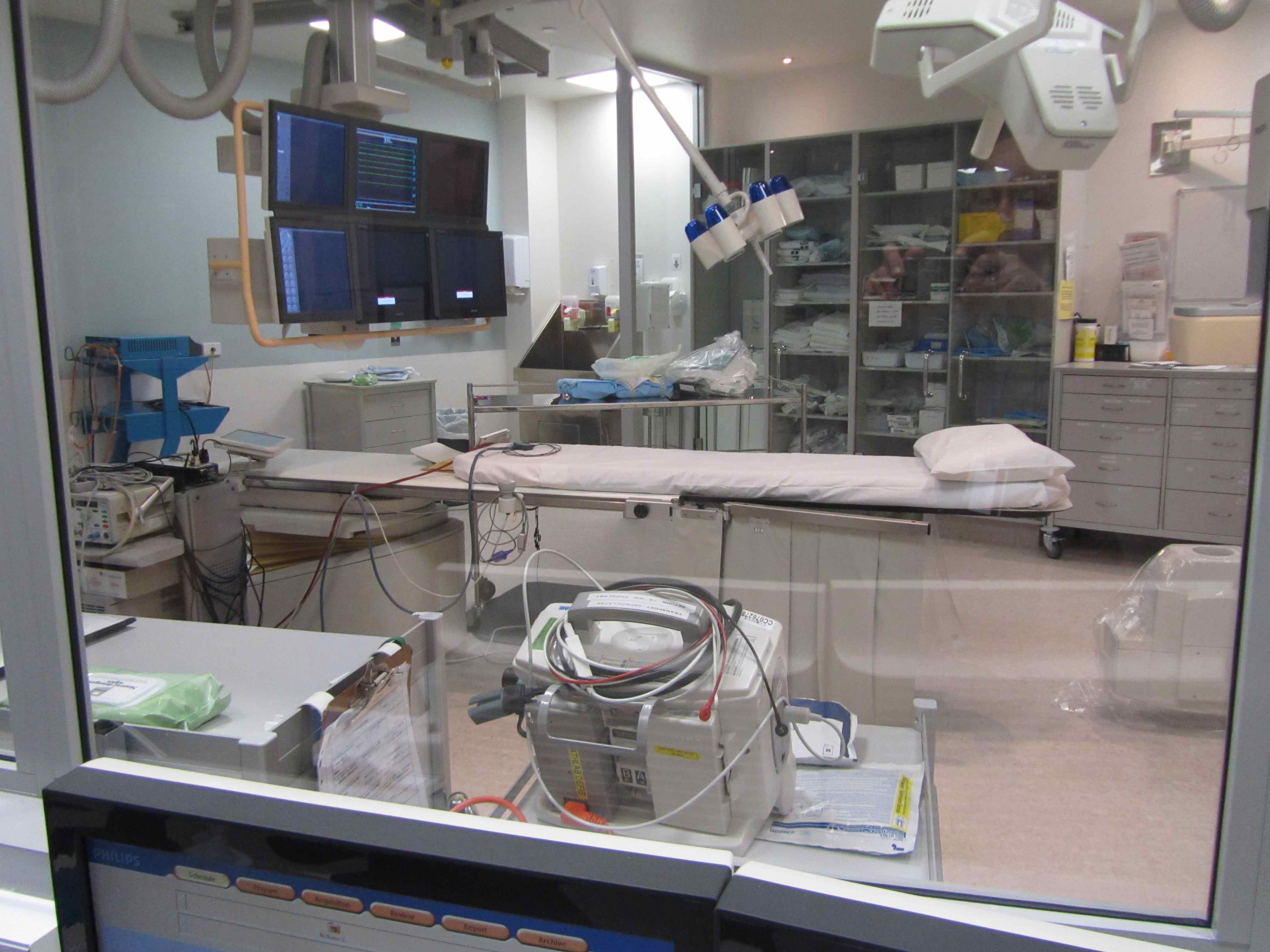 General view of the Pacing / EP Lab.
General view of the Pacing / EP Lab.
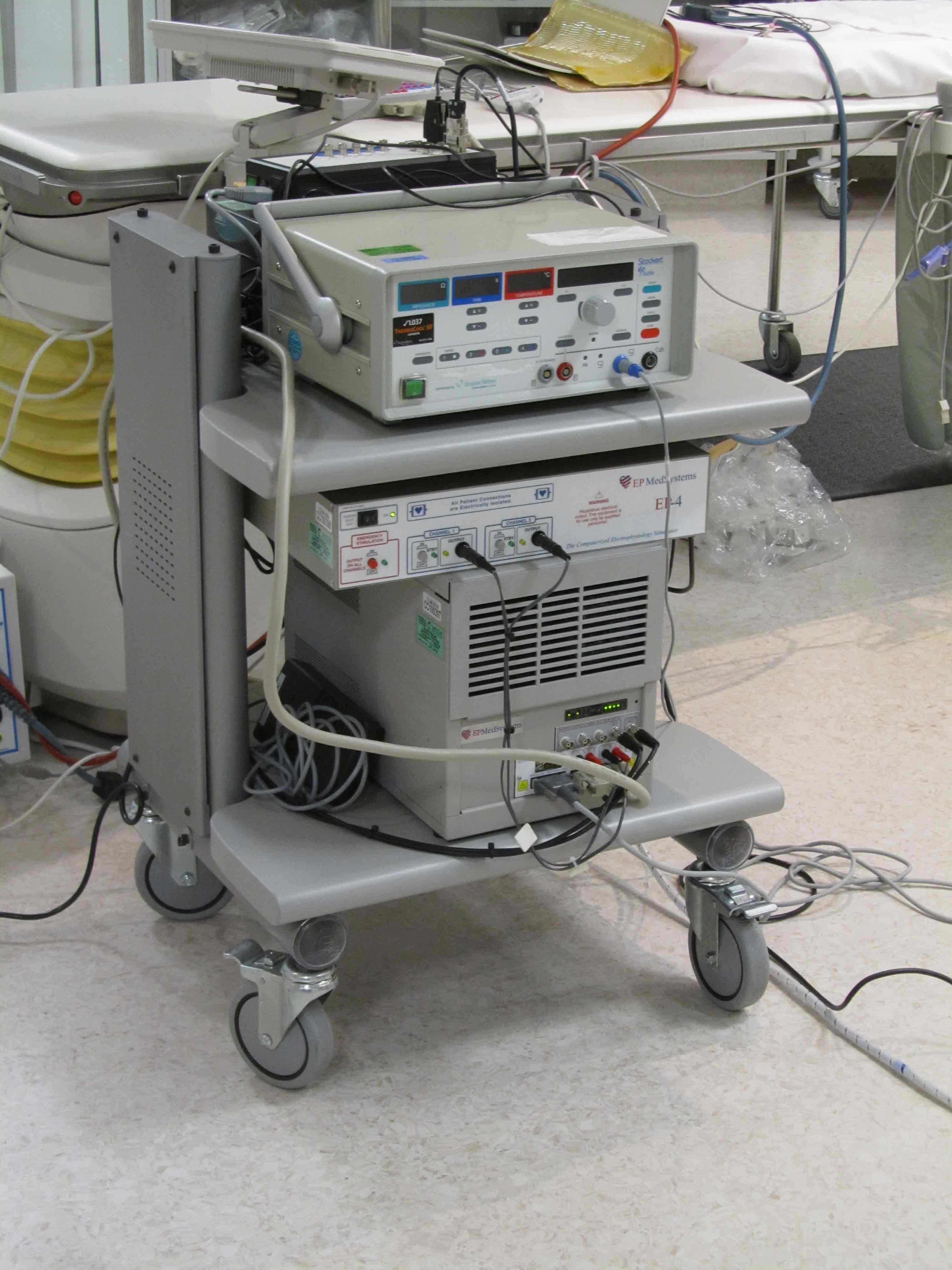
The EP cart positioned at the foot of the patient in the Lab.
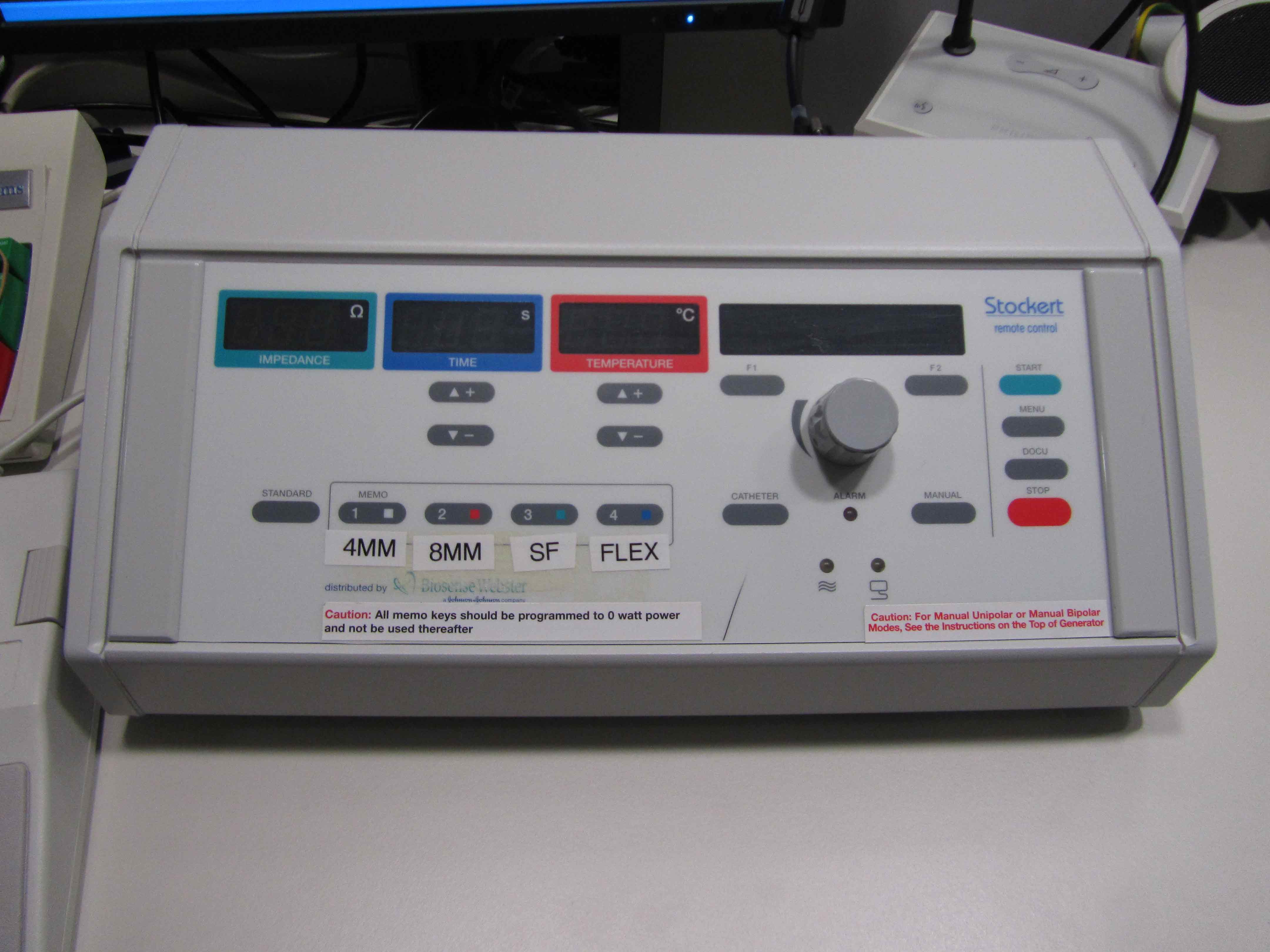 The ablator device in the control room.
The ablator device in the control room.
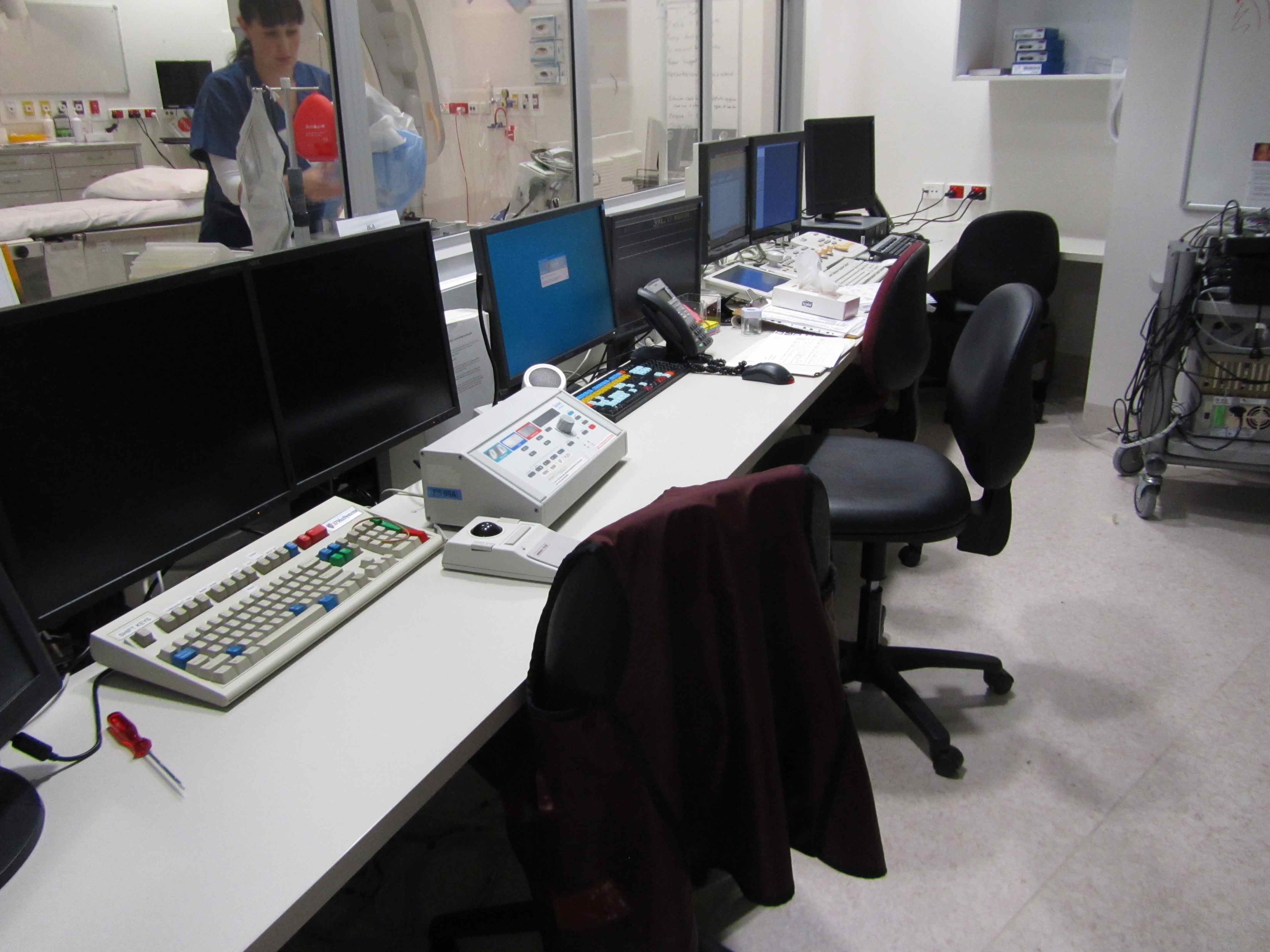 The EP control room.
The EP control room.
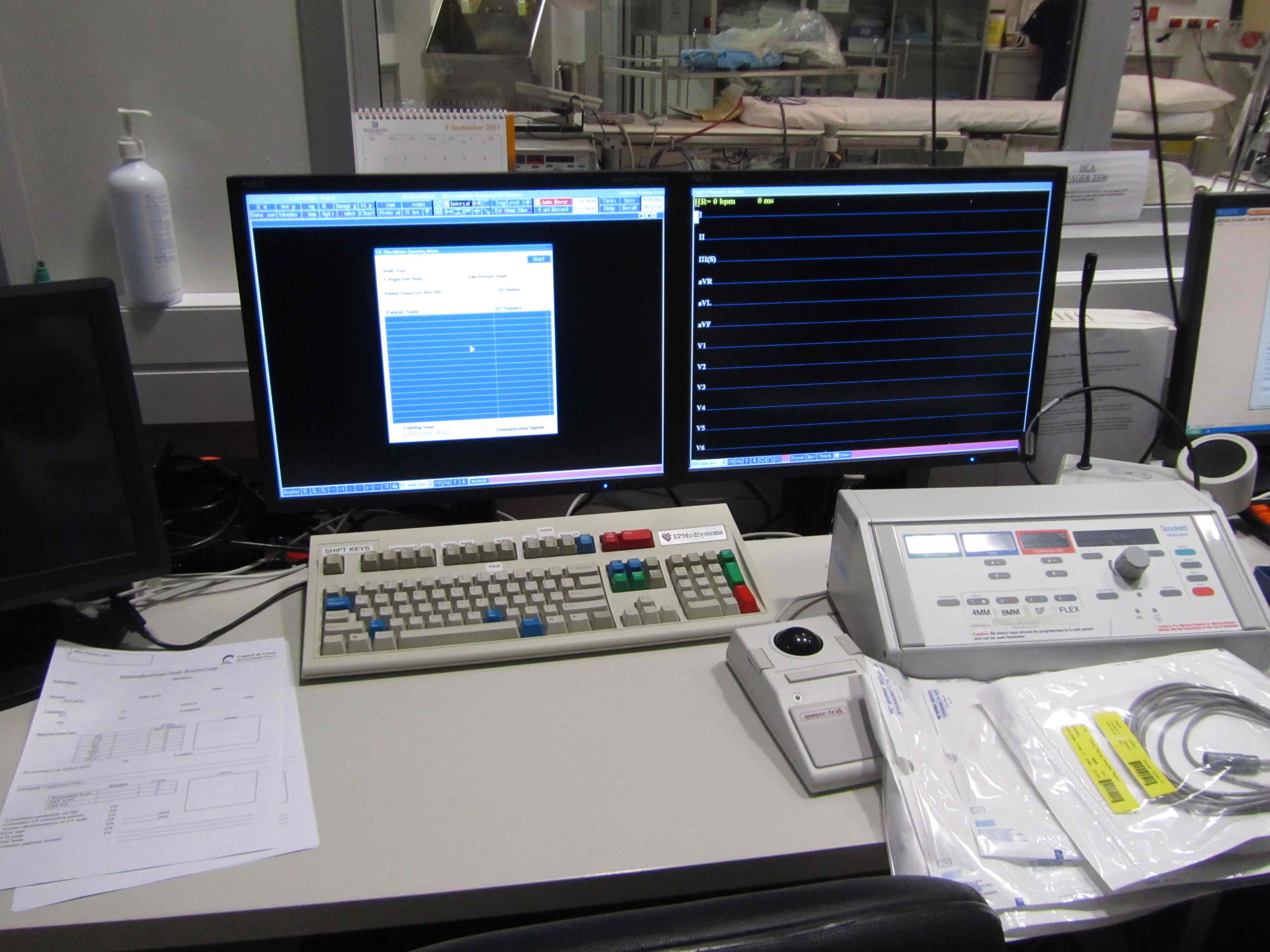
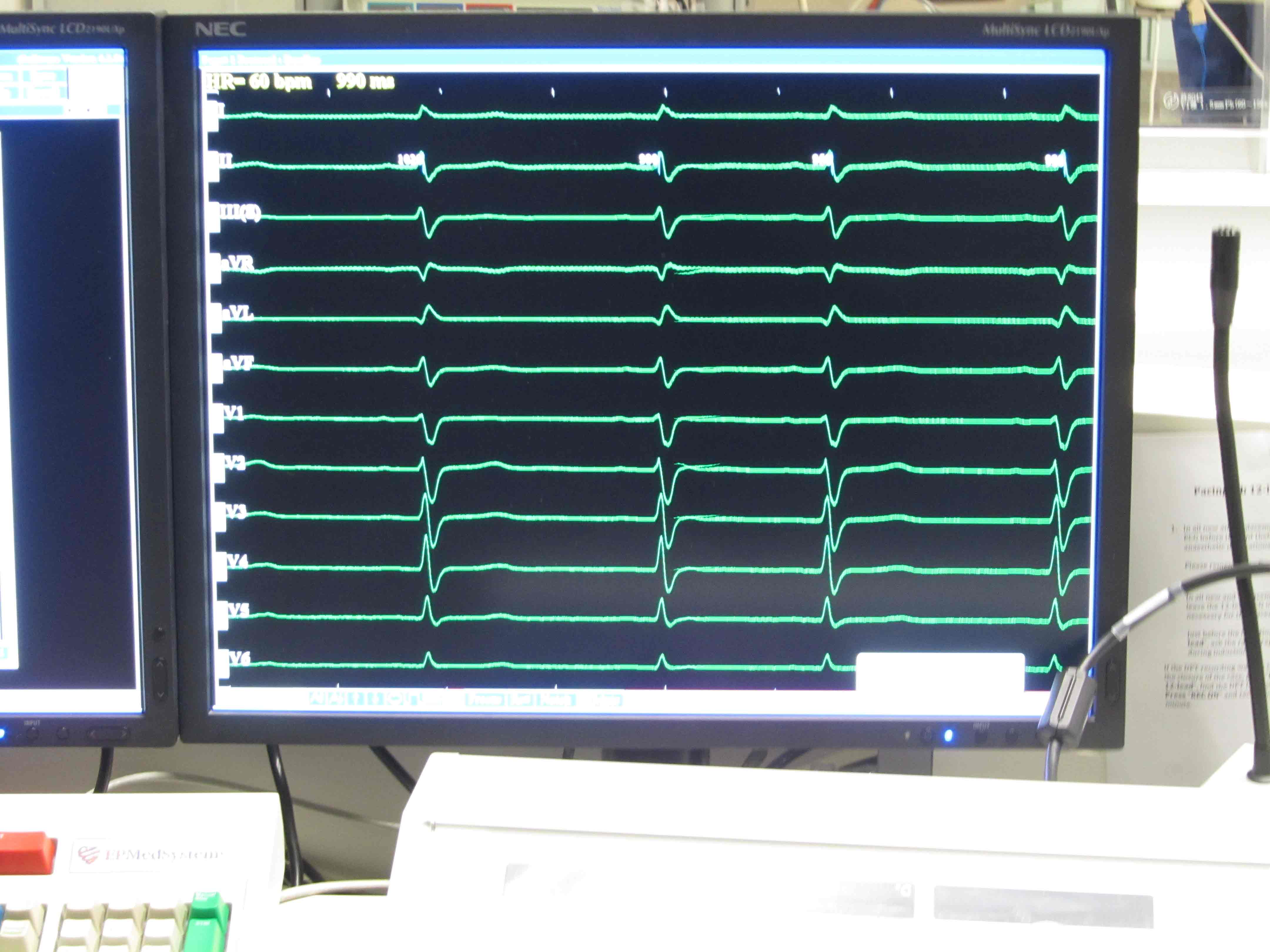
EP study monitors